When riders talk about gear, boots, and helmets usually get the spotlight. Yet the layer between your skin and those MX boots—the humble motocross sock—can decide whether a race feels effortless or miserable. In this guide, we’ll look at what makes Moto Socks special, how materials and design affect comfort, and what goes into building professional OEM and private-label versions for brands and teams.
Why Motocross Socks Are Not Just Regular Socks
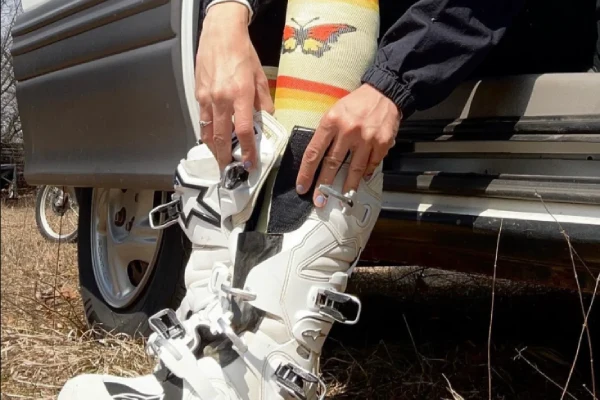
Regular gym socks weren’t made for the torture chamber inside an MX boot. During a moto, your feet stew in heat, pressure, and vibration. A thin cotton sock soaks up sweat, shifts around, and forms blisters faster than you can finish a lap.
A true motocross sock solves those problems through thickness, structure, and moisture control. Extra-dense yarn protects the shin and heel from buckle pressure, while a moisture-wicking interior keeps sweat moving outward instead of trapping heat. The knee-high length shields every inch of skin between boot and brace, preventing strap burns and chafing.
Ask any veteran rider and you’ll hear the same warning: “Wear the wrong socks, and every corner hurts.” A good pair turns pain into focus.
The Science of Comfort: Inside the Sock Design
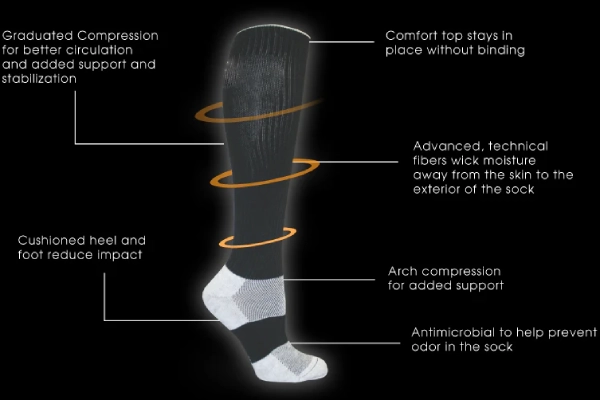
Motocross comfort isn’t accidental; it’s engineered. Think of these socks as lightweight armor with ventilation built in.
Shin & Heel Padding – absorbing boot pressure
Strategically padded zones act as miniature shock absorbers against the boot tongue and sole. They soften hits when you land a jump or grind through whoops, without creating bulk that dulls feedback from the pegs.
Knee-High Length – avoiding strap rubs and calf burn
MX socks rise just under the knee or even over it for brace users. This full coverage prevents the leather cuff and guard straps from biting into skin. The upper cuff uses gentle compression to stay up all moto long.
Breathable Fibers – managing sweat and temperature
Riders sweat liters during a heat-soaked race. Moisture-wicking socks built with micro-channel fibers pull vapor away from the foot and let it evaporate through mesh panels. The result feels like air-conditioning for your calves.
Every stitch in a quality pair has a reason—comfort that survives mud, heat, and vibration.
Fiber Technology That Keeps You Riding
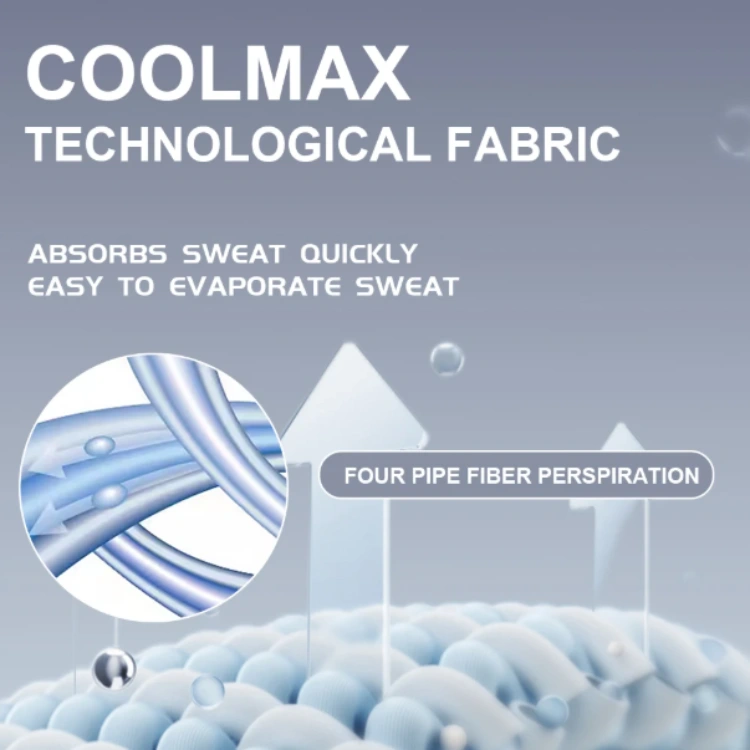
Behind every “comfortable” sock lies textile science worthy of a pit-lane engineer.
Coolmax®, Dryarn®, and Merino Wool
Coolmax® polyester channels moisture away quickly—perfect for hot, dusty tracks. Dryarn® polypropylene is lighter still, repelling water so effectively that feet stay dry even after creek crossings. For cold mornings or alpine enduro stages, Merino wool regulates temperature naturally and resists odor.
Synthetic Blends for Fast Drying
Top brands like Fox Racing and Alpinestars use polyester/nylon/spandex mixes around 80/15/5 %. The nylon adds durability against boot friction, while spandex provides stretch recovery after hundreds of heat cycles.
Anti-Odor and Antibacterial Finishes
Leatt’s MoistureCool socks include silver-ion treatment that blocks bacteria—the root of post-race stink. Such coatings survive dozens of washes, a small miracle after a mud-fest weekend.
Together, these fibers balance dryness, flexibility, and freshness, keeping your focus on throttle control instead of foot discomfort.
Rider Scenarios: What to Wear, Where
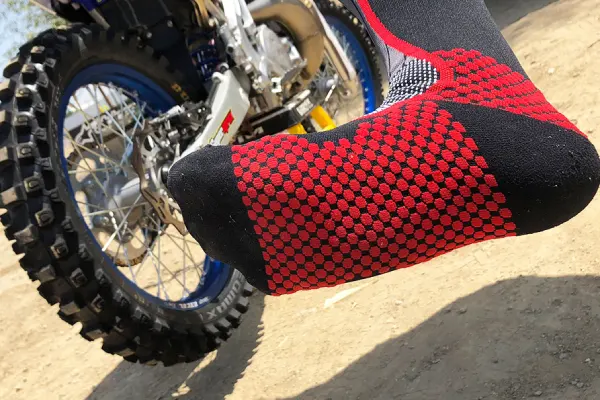
Different riding styles punish your body in various ways—so one sock can’t rule them all.
Supercross & Race Day – thin and responsive
Short motos demand maximum control. Riders choose lightweight dirt bike socks with minimal padding for a sharper boot feel. Look for thin Coolmax blends and compression ribs that lock the sock in place during explosive movements.
Enduro & Trail – cushioned and quick-dry
Hours in wet boots call for off-road socks with thicker soles and fast-dry synthetics. Extra heel padding absorbs vibration when standing on pegs for miles. A bit of merino helps when temperatures swing from valley heat to mountain chill.
Cold Weather vs Hot Weather Setups
In winter, wool or acrylic insulation keeps circulation steady without bulk. For desert heat, mesh-top summer motocross socks with Dryarn wick moisture twice as fast as cotton, preventing that swampy feel riders dread.
By matching sock build to terrain and climate, you protect your feet like pros do—because performance starts from the ground up.
How We Build OEM & Private Label Motocross Socks
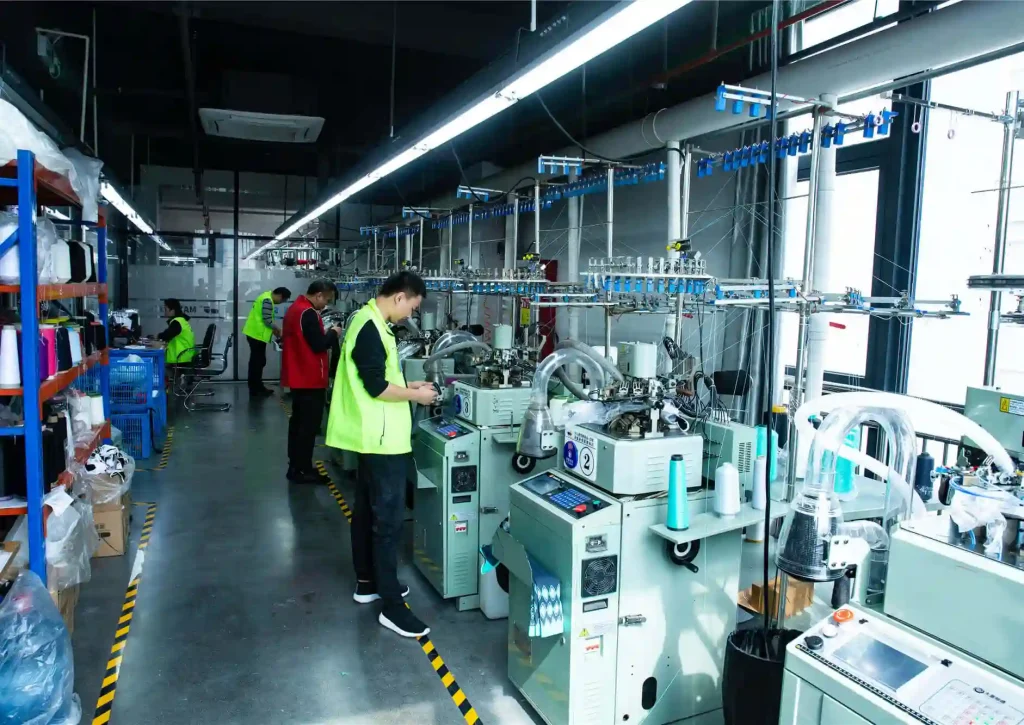
Behind every great ride, there’s a production line built on precision. Turning a design sketch into a high-performance motocross sock isn’t just about knitting—it’s an engineering process.
Design Consultation: From Tech Pack to Prototype
OEM projects start with a conversation. Brands share their riding focus—supercross, enduro, dual-sport—and our designers translate that into a tech pack: fiber choice, thickness zones, compression layout, and logo placement. Prototypes are knitted on sample machines so teams can test fit with MX boots and knee braces before bulk production.
Knitting & Silicone Printing
Once approved, we scale up on 144 – 168 needle Italian machines for fine density and stretch control. Each zone—heel, instep, shin—is programmed with its own tension profile. Silicone grip strips can be screen-printed at the thigh for knee brace socks, preventing slippage under braces.
Packaging & Brand Customization
Finally, private-label clients choose packaging formats: recycled hang cards, paper wraps, or branded zip-bags. Every bundle ships retail-ready, with labeling that meets EU and US requirements. From design to boxing, the process runs like a race team pit stop—fast, exact, repeatable.
Key Specs Buyers Should Know
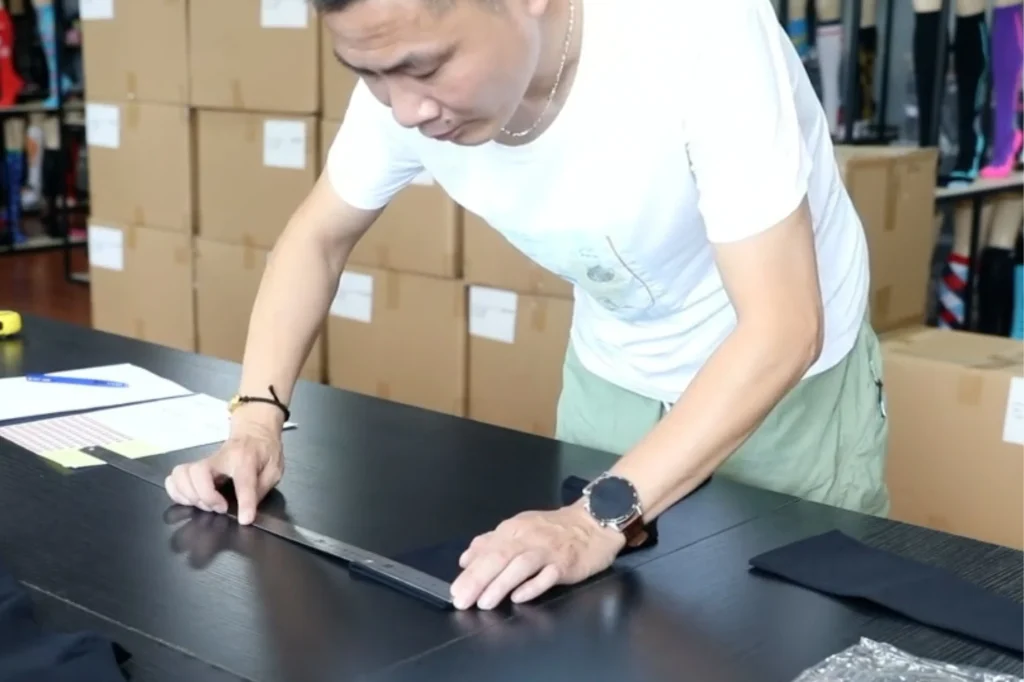
For purchasing managers and startup brands alike, understanding the tech sheet behind a sock saves headaches later.
Fiber Ratios Matter – Finding the Perfect Balance
Most premium OEM specs use about 75–80 % polyester or acrylic for wicking, 15–20 % nylon for strength, and 3–5 % spandex for stretch recovery. More nylon increases durability but slightly reduces softness; more acrylic gives a cushier feel but raises cost.
Needle Count & Density Zones
The “N” number tells you how fine the knit is. A 144 N build suits thick, padded designs, while 168 N gives a tighter, smoother surface ideal for thin racing socks. Blending density zones within one sock—thick heel, thin instep—is what separates mass-market from pro-grade production.
MOQ & Lead Time Examples
Typical factory MOQ ranges from 500 to 2,000 pairs per design. Sampling takes 10 – 14 days; full runs 30 – 45 days, depending on colorways and packaging. A well-planned calendar keeps launches aligned with race seasons instead of missing them.
Motocross Socks Spec & Cost Impact
| Spec | Function | Cost Impact |
|---|---|---|
| 80% poly / 15% nylon / 5% spandex | Balanced comfort + durability Wicking + stretch recovery |
|
| 168 N machine | Thin racing profile High responsiveness |
|
| 144 N machine | Thick trail comfort Extra cushioning |
|
| Silicone gripper print | Anti-slip for braces Thigh grip control |
|
| Antibacterial finish | Odor control Silver-ion treatment |
Testing & Quality: Built for Real Tracks
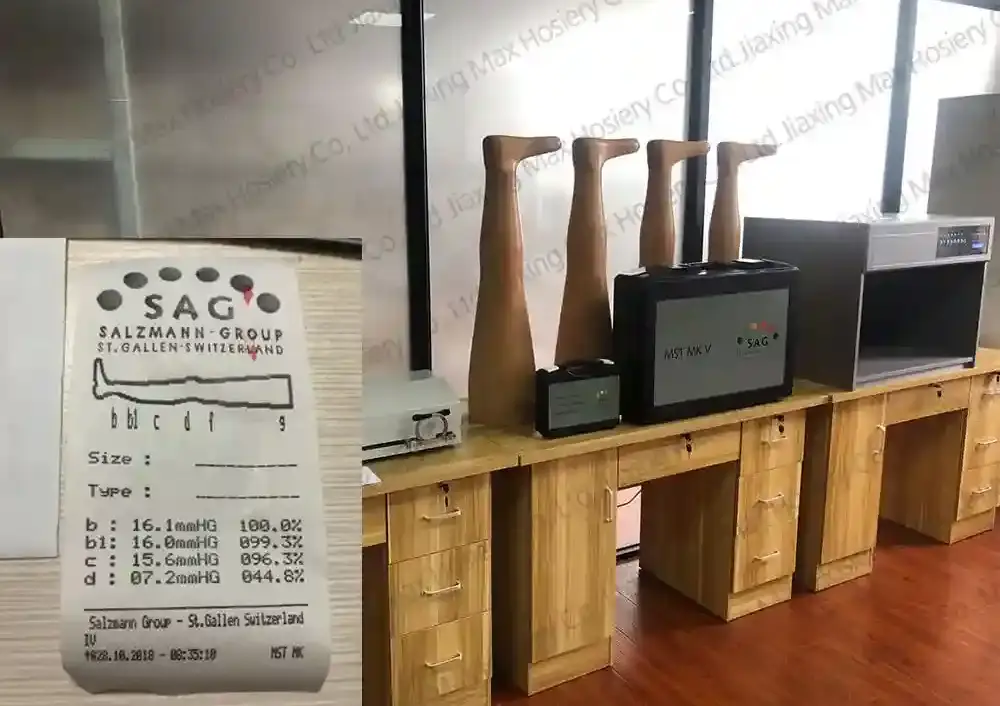
No brand wants returns because a sock shrank or lost elasticity after one wash. Every batch faces abuse long before riders do.
Abrasion & Stretch Recovery Tests
Fabric swatches run through Martindale abrasion testers until the first yarn break. High-end models survive 25,000 cycles—about a full season of racing. Stretch recovery is measured by elongating to 150 % and checking rebound; quality motocross socks must snap back without sagging.
Mud Wash & Colorfastness
We simulate real-world chaos by stirring dyed samples in clay water and detergent. Colors must hold after 50 wash cycles, proving the logo won’t fade even when riders drown boots in a puddle.
Compliance and Certifications
Our materials comply with OEKO-TEX Standard 100 and REACH limits for dyes and elastomers. Some buyers add anti-pilling tests to ensure the surface stays smooth under boot friction.
Testing isn’t paperwork—it’s insurance that your socks look as tough as they feel.
How to Choose the Right Pair (or Partner)
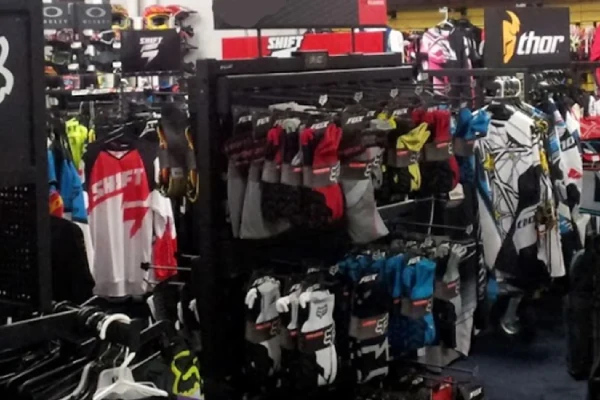
Different readers, different goals—but the decision always starts with clarity.
For Riders: Pick Your Perfect Pair
Look for balanced padding, snug compression around the arch, and breathable yarns labeled quick-dry yarns. Try them with your own MX boots—fit beats fashion. Replace pairs every season or sooner if elasticity fades.
For Brands: Finding the Right OEM Factory
A reliable motocross socks factory should show previous OEM references, transparent fiber sourcing, and in-house testing. Request data, not promises. Factories that invest in 3D-knitting and digital color management save you future headaches in consistency.
For Teams: Customize Without Compromise
Clubs and race teams can create custom motocross socks with their logos woven, not printed, to prevent peeling. Coordinated color sets build team identity—and look great in photos when everyone’s boots are off after the podium.
FAQ
What makes motocross socks different from regular socks?
Motocross socks are taller, thicker, and made from sweat-control fibers to protect against boot pressure and friction. They manage sweat and add shin and heel padding for better comfort in MX boots.
Do motocross socks really help with performance?
Yes. Proper moto socks improve circulation, reduce blisters, and keep your feet dry—so you can maintain better control and endurance through long motos or trail rides.
What materials are best for motocross socks?
Top fabrics include Coolmax®, Dryarn®, and Merino wool, each offering fast-drying, breathable, and odor-resistant performance. Many premium OEM socks combine synthetics and natural fibers for balanced comfort.
Can I customize motocross socks with my logo or team colors?
Yes. Many OEM and private-label motocross sock factories offer full customization—logo knitting, color matching, and branded packaging.
How often should motocross socks be replaced?
Replace them every one to two racing seasons or after roughly 80–100 riding hours. Elastic fatigue, pilling, or thin spots mean it’s time for a new pair.
Comfort for Riders, Quality for Brands
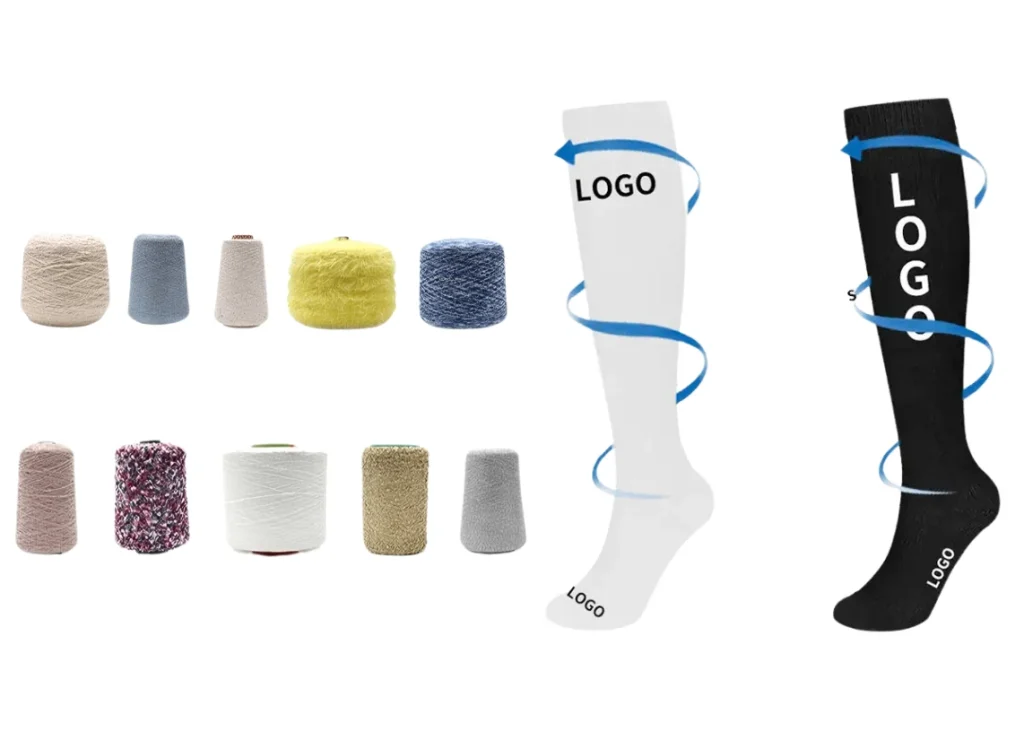
A great ride starts from the ground up. The right motocross socks keep riders focused, not distracted by heat, friction, or fatigue. Behind every high-performing pair is precision design and disciplined manufacturing.
At Max Hosiery, we bring both to life—combining advanced knitting, breathable fibers, and strict testing to deliver reliable OEM and private label motocross socks for global brands and teams.
→ Contact our OEM motocross socks factory to request samples or quotes, and let’s build comfort that wins races.
